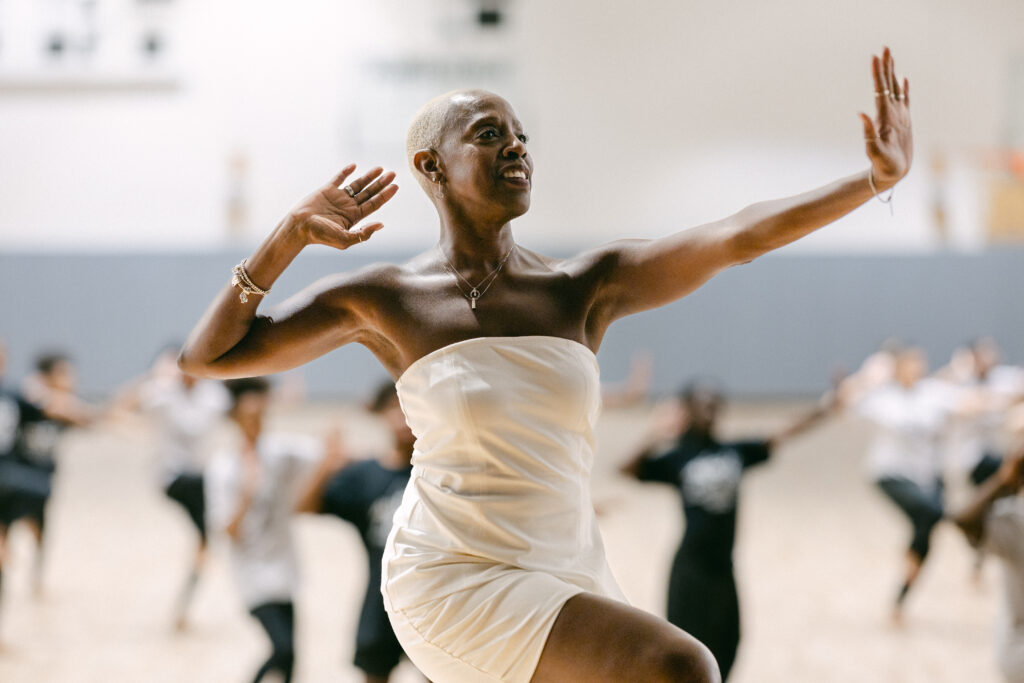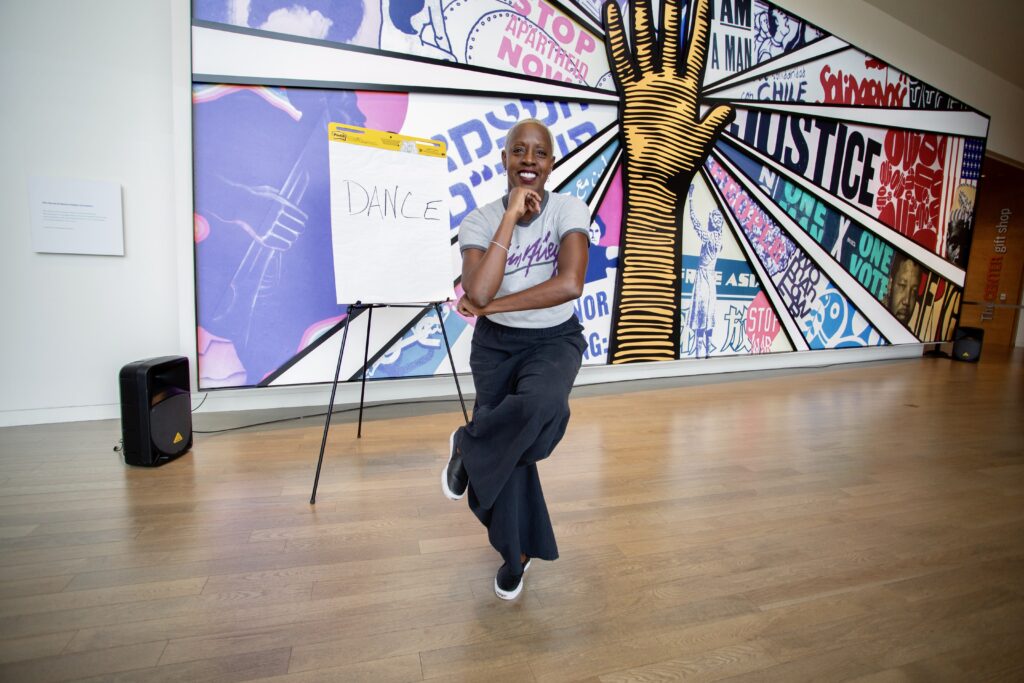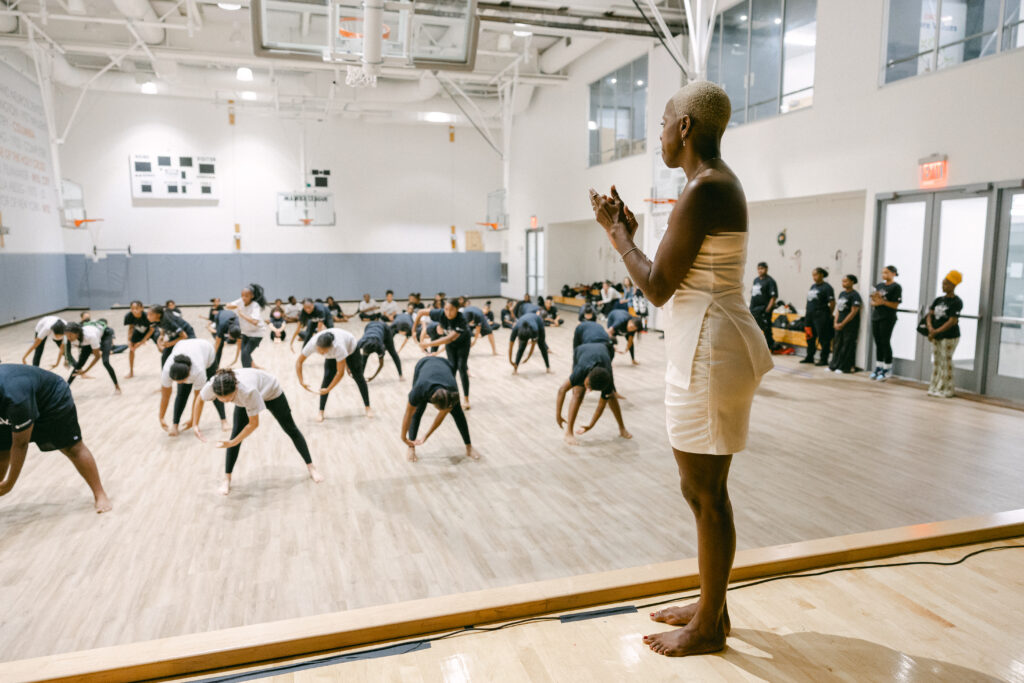Nasha Thomas

For many families, friends, crews, and squads, a holiday ticket to an Alvin Ailey Dance Theatre performance is a tradition as magical as gently falling snow. Leaving the theatre, the world seems different, absolutely pure, new, and perfect with its celestial frosting.
But underneath that ethereal sparkle, there’s a whole lotta sweat and hustle. Nasha Thomas will always be a dancer. At the invitation of Alvin Ailey and later under the direction of Judith Jamison, she danced with Alvin Ailey American Dance Theater from 1986 to 1998. Today, at age 61, she says “Life feels good to me. I intend to keep working and remain relevant. I’ve found the life balance I lacked when I was young. So I’ve never stopped. I worked virtually during COVID and now I’m traveling again, loving the work, and just pumped up to give my 150%!”

She oversees AileyCamp and designs the national outreach for Ailey’s Arts In Education & Community Programs. As a primary liaison between the Ailey organization and the national arts-in-education community, she plays a central role in working with local communities to develop and run AileyCamp in cities across the U.S. Thomas also manages national residencies, leading workshops, and teaching master classes, helping Arts In Education reach over 100,000 people each year through education and community initiatives. A graduate of New York’s High School of the Performing Arts and Southern Methodist University, she’s also the recipient of the prestigious Presidential Scholar of the Arts award.


Across the color line, waif-like thinness has always been the visual calling card of the ballerina. Not surprisingly, eating disorders became an accepted part of a dancer’s emotional survival kit. “I am somebody who always had a fast metabolism, and I had to eat steak and pasta to keep my weight up! Now we’re not as thin, not as extreme, and we’ve gotten away from the weight obsession,” says Thomas. Part of the reason is the crossover between modern and classical techniques.
“I remember seeing a performance of the Joffrey Ballet and thinking that one of the dancers looked a little, well, round, but what a beast onstage! Unbelievable power! So it’s worth remembering that back in the day, lining up for Alvin Ailey, we were all different body types, even then. As a serious artist, I always saw my body as an instrument to be protected and valued.”
Today, her approach is more holistic than when she performed in pointe shoes. In 2011, Thomas was summoned to dance the third section of Ailey’s iconic ballet, Cry, created by Ailey as a birthday gift for his mother. Of the dance, Ailey’s muse Judith Jamison in her autobiography Dancing Spirit wrote, “In those days, none of us could shop at Tiffany or Bloomingdales, so Alvin decided the nicest present he could give his mother was a ballet. We went into the studio…and began moving to the music…and in a few days…Alvin made an enduring work of art…Cheering audiences still have Alvin’s birthday present to his mother.”
Thomas had not danced professionally in 13 years when she received the invitation following Jamison’s retirement. “I couldn’t touch my toes,” she recalls. “I had not been in training.” To raise the barre, she began taking Bikram Yoga four or five days a week. “After about three months,” she recalls, “I got back my stamina and flexibility. And my mental tenacity was reactivated, so I was ready to perform again.”
Now, she does hot yoga in a room between 102F and 104F once or twice a week. And although she may be a bit gentler with herself these days, she still is a fierce champion for excellence in every quarter. “Mediocrity,” she says, “Is rampant! Accepting mediocrity hurts Black people. I’m all about giving extra and going further. I tell everyone in my program, that presentation is everything. How you dress. Speaking a certain way. How you show up in the world really matters.”

Her major source of energy today is not performing, or even steak and pasta, but inspiring young people to give their 150%, whether onstage or in life in general. Of her current free program for underserved, at-risk youth she says, “Dance is the vehicle, but the program is really about developing critical thinking skills in this young person, giving them a platform. I want every child to know that they are a citizen of the world! The program is about making that young person productive, learning life skills, how to resolve conflicts, understanding health and nutrition, resisting and overcoming peer pressure, and achieving self-respect. And you know what? They rise to the challenge. It’s great to see that light go on inside a young person, or in anyone.”
#
Be the first to comment